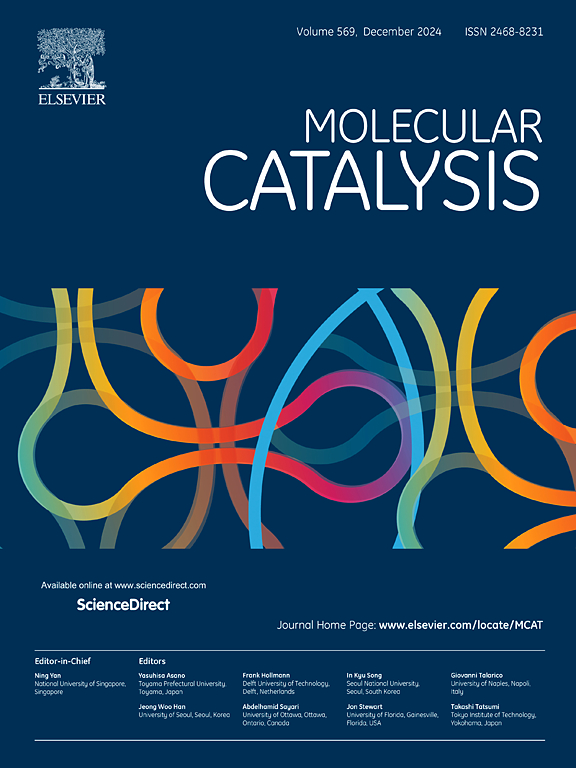Bifunctional catalysts based on 2-amino-1,10-phenanthroline-containing podands for cyclic carbonates synthesis from CO2 and epoxides under mild conditions
IF 3.9
2区 化学
Q2 CHEMISTRY, PHYSICAL
引用次数: 0
Abstract
A new series of polytopic ligands based on 1,10-phenanthroline and polyoxadiamines has been synthesized through SNAr amination between 2-chloro-1,10-phenanthroline and diamines of various structures. The obtained podands were investigated as polytopic ligands for potassium and zinc ions in the industrially important reaction of cyclic carbonates synthesis from CO2 and epoxides under mild conditions (p(CO2) = 1 atm., T = 60–80 °C). The advantage of 1,11-diamino-3,6,9-trioxaundecane functionalized by 1,10-phenanthroline units compared to the diamine itself is demonstrated. It is revealed that heteroarylated 1,11-diamino-3,6,9-trioxaundecane can be used as a catalyst in the presence of KI (2 mol.%) with a low loading of the ligand (0.2 mol.%) instead of the usually employed 5–10 mol.% for unfunctionalized podands. Under these reaction conditions mono-substituted cyclic carbonates of various structures have been synthesized in excellent preparative yields ranging from 87 to 99%. Coordination of two Zn(II) ions to both 1,10-phenanthroline moieties has been shown to provide additional enhancement of catalytic activity. The catalysts demonstrate excellent stability and can be reused at least in 6 cycles.

2-氨基-1,10-邻菲罗啉双功能催化剂在温和条件下由CO2和环氧化物合成环状碳酸盐
通过2-氯-1,10-菲罗啉与不同结构的二胺之间的SNAr胺化反应,合成了一系列新的以1,10-菲罗啉和多氧二胺为基础的多配体。在温和条件下(p(CO2) = 1atm)由CO2和环氧化物合成环碳酸盐,研究了所得到的豆荚体作为钾离子和锌离子的多配体。, t = 60-80°c)。证明了1,10-邻菲罗啉单元功能化的1,11-二氨基-3,6,9-三氧十一烷与二胺本身相比的优势。结果表明,杂芳化的1,11-二氨基-3,6,9-三氧十一烷可以在KI (2 mol.%)存在下作为催化剂,并且配体的负载较低(0.2 mol.%),而不是通常使用的5-10 mol.%的未功能化豆粒。在此反应条件下,合成了各种结构的单取代环碳酸盐,收率在87% ~ 99%之间。两个Zn(II)离子与两个1,10-菲罗啉基团的配位已被证明提供了额外的催化活性增强。催化剂表现出优异的稳定性,至少可重复使用6次。
本文章由计算机程序翻译,如有差异,请以英文原文为准。
求助全文
约1分钟内获得全文
求助全文
来源期刊

Molecular Catalysis
Chemical Engineering-Process Chemistry and Technology
CiteScore
6.90
自引率
10.90%
发文量
700
审稿时长
40 days
期刊介绍:
Molecular Catalysis publishes full papers that are original, rigorous, and scholarly contributions examining the molecular and atomic aspects of catalytic activation and reaction mechanisms. The fields covered are:
Heterogeneous catalysis including immobilized molecular catalysts
Homogeneous catalysis including organocatalysis, organometallic catalysis and biocatalysis
Photo- and electrochemistry
Theoretical aspects of catalysis analyzed by computational methods
 求助内容:
求助内容: 应助结果提醒方式:
应助结果提醒方式:


